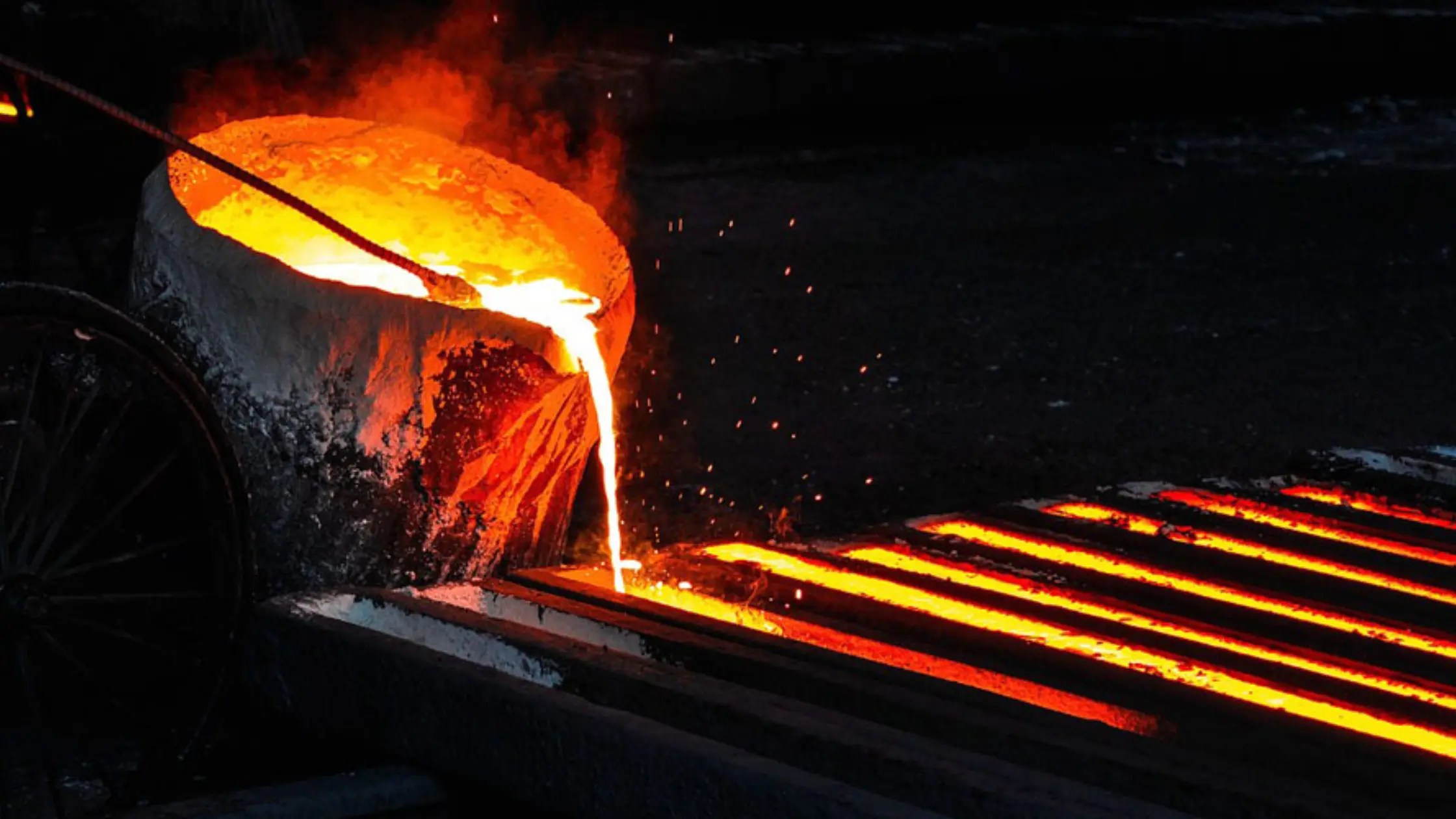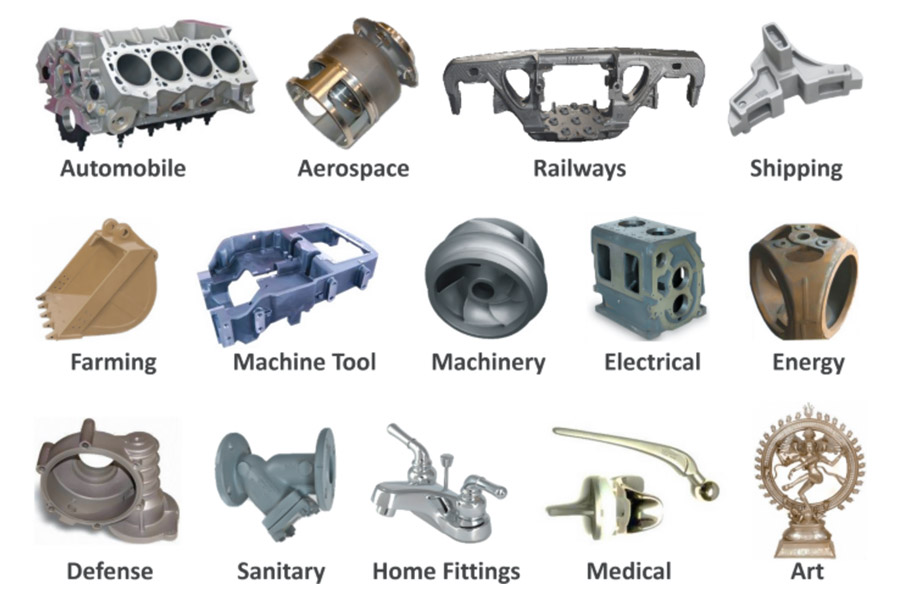Understanding the Metal Castings Process: A Comprehensive Guide for Beginners
The Metal Casting procedure is a basic technique in making that changes molten metal right into strong types. Beginners have to comprehend the different approaches entailed, such as sand spreading and die spreading. Recognizing the materials, design concepts, and safety procedures is similarly important. Each aspect plays a critical function in achieving effective results. As one navigates these ins and outs, the question of just how to enhance each action for improved outcomes becomes significantly relevant.
The Basics of Steel Casting
Metal Casting has actually developed over centuries, its basic principles stay constant and integral to the production procedure. At its core, Metal Casting includes the makeover of molten metal into solid items with different methods. The process starts with the creation of a mold, which defines the shape of the final item. When the mold and mildew is prepared, metal is heated up to its melting factor and put right into the dental caries. After cooling down, the steel strengthens, taking the form of the mold and mildew.
There are a number of casting approaches, including sand casting, financial investment spreading, and die spreading, each with unique advantages and applications. The option of strategy depends on variables such as manufacturing volume, material type, and preferred accuracy. Once cast, the final product may go through extra procedures like machining or surface area therapy to achieve the required surface and specs. Understanding these essentials is vital for any individual thinking about the field of Metal Casting.

Understanding Materials Used in Metal Casting
Products play a vital function in the Metal Casting process, influencing the last item's residential properties and performance. Different metals are used, consisting of aluminum, bronze, iron, and steel, each offering distinctive features fit for particular applications. Light weight aluminum is corrosion-resistant and lightweight, making it optimal for automotive components. Iron, especially cast iron, is preferred for its excellent wear resistance and longevity. Steel supplies high stamina and convenience, often utilized in heavy machinery elements. Bronze, recognized for its corrosion resistance and machinability, is typically employed in marine applications.
Along with the metals, various casting products, such as sand, plaster, and ceramic, are utilized to produce mold and mildews. Sand casting, one of the most widespread approach, uses silica sand because of its thermal security and ability to develop detailed forms. Plaster and ceramic mold and mildews offer better details yet might require even more intricate processes. The selection of materials straight influences the performance, expense, and top quality of the casting operation.
The Design Process: From Concept to Plan
The design process in Metal Casting begins with the preliminary concept development, where ideas are created and reviewed. This is adhered to by the application of CAD modeling methods, permitting exact visualizations of the design. The blueprint finalization actions ensure that all specs are precisely documented for manufacturing.
Preliminary Concept Growth
Initial principle advancement notes a vital phase in the Metal Casting process, where concepts change into concrete layouts. During this phase, developers collaborate with designers and stakeholders to brainstorm and refine preliminary concepts. They take into consideration variables such as capability, visual appeals, and manufacturability, ensuring that the style meets the needed requirements and efficiency criteria. Illustrations and outlines are created to envision the concepts, enabling preliminary evaluations of feasibility and cost-effectiveness. This phase likewise involves determining products and possible spreading techniques that line up with the style goals. Inevitably, initial concept development prepares for a complete blueprint, assisting the subsequent phases of the casting process and ensuring a successful shift from principle to reality.
CAD Modeling Techniques
Transforming ideas right into exact designs, CAD modeling strategies play an essential role in the Metal Casting procedure. These methods use innovative software to create thorough three-dimensional models that precisely show the designated item. By using devices such as parametric modeling, strong modeling, and surface area modeling, developers can control measurements and shapes effortlessly. CAD systems likewise assist in simulation and evaluation, enabling the recognition of potential imperfections prior to manufacturing begins. This aggressive approach minimizes product waste and enhances the style for manufacturability. In addition, CAD versions can be conveniently changed, allowing fast versions based on comments. Basically, CAD modeling functions as the foundation of the style procedure, linking the void between initial concepts and the ultimate production-ready layouts.
Blueprint Completion Tips
Adhering to the creation of in-depth CAD models, the next phase involves blueprint finalization, which is essential in converting digital styles into actionable prepare for production. This procedure begins with evaluating the CAD versions for accuracy and compliance with requirements. As soon as verified, the measurements, resistances, and product specs are meticulously outlined to ensure clarity. Including notes and comments aids connect necessary information pertaining to casting procedures, surface area coatings, and assembly demands. The completed blueprint undergoes a strenuous approval process, frequently entailing cooperation with engineers and production teams to attend to any kind of possible problems. Modifications are made and authorizations obtained, the blueprint is formally released, offering as the fundamental record for the succeeding phases of Metal Casting, consisting of pattern making and mold design.
The Metal Casting Strategies Clarified

Metal Casting methods encompass a variety of approaches utilized to form liquified metal right into wanted types. These techniques differ according to the sort of material, complexity of the design, and manufacturing volume. Sand spreading is among the most common methods, including the creation of a mold and mildew from sand to hold the liquified steel. Financial investment casting, or lost-wax casting, allows for complex styles by utilizing a wax pattern that is thawed away. Pass away casting utilizes high-pressure shot of liquified steel right into a mold and mildew, appropriate for mass production. Other approaches include long-term mold and mildew spreading, which makes use of recyclable mold and mildews, and centrifugal casting, where rotational pressures assist in loading the mold. Each strategy has its advantages and applications, making it vital for makers to select the proper method based on their details needs and demands. Comprehending these techniques is essential for any person associated with the Metal Casting process.
Ending Up Procedures: Enhancing Your Casted Product

Finishing procedures play an essential function in boosting the quality and look of casted products. Various surface therapy strategies, such as sprucing up and coating, are employed to boost longevity and aesthetics. In addition, quality examination approaches assure that the end product satisfies defined requirements and efficiency demands.
Surface Area Treatment Methods
A range of surface therapy techniques play a necessary duty in enhancing the top quality and longevity of casted products. These methods include methods such as shot blasting, brightening, and finish. Shot blowing up effectively eliminates surface area blemishes, enhancing the visual and functional attributes of the casting. Polishing gives a smooth surface, which is especially important for ornamental applications and elements requiring marginal rubbing. Layer techniques, such as electroplating or powder finish, deal added defense versus deterioration and wear, ensuring resilience. Furthermore, surface area treatments can boost attachment for subsequent processes, such as painting or bonding. By using these approaches, suppliers can attain superior surface top quality, which is important for the performance and life expectancy of Metal Casting in why not check here different applications.
Quality Evaluation Approaches
Efficient quality assessment approaches are vital for guaranteeing the stability and performance of casted products after the finishing processes. Numerous strategies are utilized to examine the quality of Metal Casting, consisting of aesthetic examination, dimensional checks, and non-destructive screening (NDT) Visual inspection permits the identification of surface area flaws, while dimensional checks Continue ensure that items fulfill defined resistances. NDT techniques, such as ultrasonic testing and radiographic examination, offer deeper understandings right into inner stability without harming the castings. Additionally, mechanical screening, such as tensile and firmness tests, assesses product residential properties - Wisconsin Aluminum Foundry. By employing a combination of these techniques, suppliers can boost product top quality and dependability, inevitably leading to better client fulfillment and decreased manufacturing expenses
Safety Considerations in Metal Casting
While the Metal Casting procedure offers numerous advantages, it also offers a series of safety dangers that should be meticulously managed. Workers in casting facilities are subjected to high temperatures, liquified steels, and hazardous products, which can result in serious injuries if appropriate safety measures are not taken. Personal safety devices (PPE) such as heat-resistant gloves, face guards, and safety garments is essential to reduce threats.
Additionally, the presence of fumes and dirt requires correct air flow systems to guarantee air high quality - Aluminum Foundry. Normal training on security methods is vital for all staff members to recognize potential dangers and react effectively. Emergency situation procedures should be established, consisting of fire precaution and emergency treatment availability. Maintenance of tools and correct handling of products additionally add to a more secure working environment. By prioritizing get redirected here these safety factors to consider, Metal Casting procedures can protect their labor force and preserve effective production procedures
Frequently Asked Inquiries
What Are the Ecological Impacts of Metal Casting?
Metal Casting can bring about environmental influences such as air and water air pollution, source exhaustion, and power usage. Additionally, incorrect waste administration and discharges from foundries add to ecological disturbances and health risks for neighboring neighborhoods.
Just how Do I Select the Right Metal for Spreading?
To pick the right metal for spreading, one have to think about variables such as mechanical residential or commercial properties, corrosion resistance, thermal conductivity, and price. Reviewing the desired application and environmental problems is necessary for excellent option.
What Are the Typical Flaws in Metal Casting?
Common defects in Metal Casting consist of porosity, contraction, sand inclusion, and misruns. These problems usually emerge from inappropriate material choice, poor design, or problems in the casting process, affecting the end product's high quality and performance.
How Can I Boost My Metal Casting Abilities?
To enhance Metal Casting abilities, one need to exercise regularly, research study casting strategies, evaluate previous jobs for problems, look for comments from seasoned wheels, and constantly experiment with various materials and approaches to improve efficiency and understanding.
What Is the Expense of Beginning a Metal Spreading Company?
Beginning a metal spreading business typically needs an initial financial investment of $5,000 to $50,000, depending on devices, products, and facility costs. Elements like location and range can significantly influence overall start-up expenditures.
The Metal Casting procedure is a basic strategy in making that changes molten steel right into strong kinds. Newbies have to comprehend the different techniques involved, such as sand casting and pass away spreading. There are a number of casting methods, consisting of sand spreading, investment spreading, and pass away spreading, each with one-of-a-kind benefits and applications. Investment casting, or lost-wax casting, allows for detailed styles by utilizing a wax pattern that is melted away. Other approaches include irreversible mold and mildew casting, which uses multiple-use mold and mildews, and centrifugal spreading, where rotational forces aid in filling up the mold.